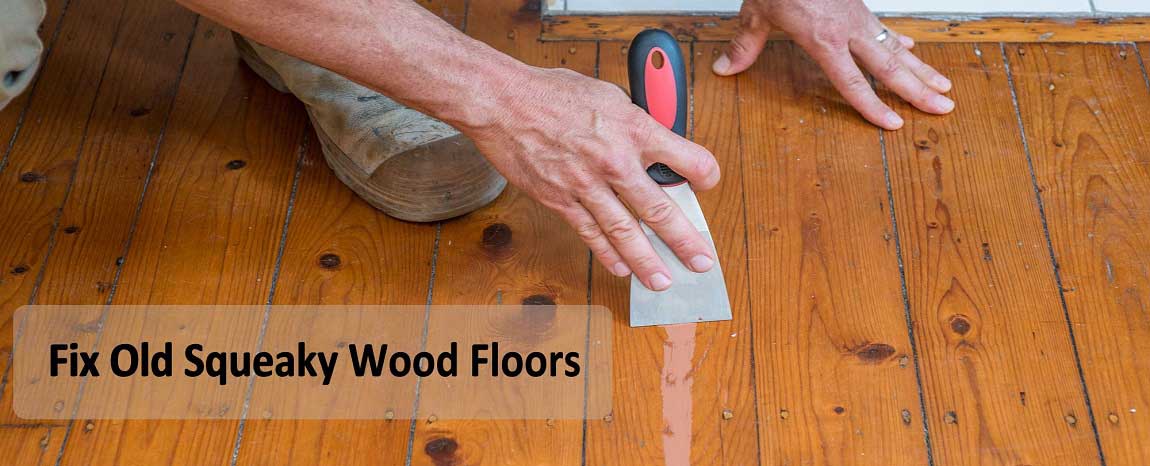Imagine this: It’s a quiet evening, just you and your favorite book. You settle into a comfy chair and, right as you’re getting absorbed in the story, a floorboard creaks. It’s a minor annoyance, yet it disrupts the serenity of the moment. That’s the frustration of squeaky wood floors, and believe me, it’s a common one! But fear not, because finding the best way to fix squeaky wood floors doesn’t have to be a stressful project. This guide will illuminate the path to a tranquil home, free from the dreaded squeak.

Image: viewfloor.co
Whether your floors are a new addition or have stood the test of time, the underlying cause of squeaks is often the same: loosened floorboards. Wood expands and contracts with temperature and humidity changes, leading to shifting and movement. This friction between floorboards and the subfloor is the culprit behind those pesky creaks. But before we dive into the repair solutions, let’s understand the different types of squeaks and what they might tell you about your flooring issue:
Decoding the Squeak: Understanding the Cause
- “The Nail-Biting” Squeak: This high-pitched squeak usually occurs when applying pressure to the floorboard. It’s the most common type of squeak and often indicates the nails holding the floorboards down have loosened or pulled out.
- “The Crumbling” Squeak: This duller type of squeak is often a sign of structural problems. It could be caused by the subfloor itself being loose or perhaps a worn-out floor joist underneath.
- “The Bone-Dry” Squeak: Sometimes, the squeak is a result of wood drying out. The wood shrinks and creates gaps between the boards, resulting in a creaking when stepped upon.
The Best Way to Fix Squeaky Wood Floors: Solutions for Every Scenario
Now that you have a better understanding of the “squeakspeak,” let’s explore some effective ways to silence those noisy floorboards:
1. Tightening Loose Floorboards
This is the most common and often simplest solution. You’ll need a hammer, nails, or screws, and a drill (if using screws). To start, identify the source of the squeak by tapping different sections of the floor. Once you’ve pinpointed the culprit, follow these steps:
- Locate the Nails: Carefully pry open the floorboards above and below the squeak to expose the nails holding them down.
- Reinforce the Connection: Gently tap the existing nails in deeper or replace them with longer, stronger nails. If you’re unsure, call a professional for advice.
- Secure with Screws: For a lasting solution, consider replacing the nails with screws. Pre-drill holes to prevent the wood from splitting.
- Finish Up: Replace the floorboards and enjoy the newfound quietness!

Image: jjvs.org
2. Apply Wood Glue
For stubborn or persistent squeaks, glue can do wonders. Find a wood glue specifically designed for flooring applications.
- Apply Glue: After locating the loose boards, apply glue generously along the edges and back of the boards that are making contact with the subfloor.
- Clamp Boards: Once glued, clamp the boards together and wait for the glue to dry completely.
- Sanitize: Clean up any excess glue.
3. Employ Shims
Shims are thin pieces of wood that act as spacers, filling in gaps and providing extra support.
- Selection: Choose shims that are thin enough to fit snugly but not too thick to create an uneven surface.
- Placement: Slide the shims carefully under the floorboard where it meets the subfloor.
- Secure: If needed, use wood glue, nails, or screws to hold the shims in place.
4. Sound-Dampening Underlayment
For a more comprehensive approach, sound-dampening underlayment can be the answer. This is a material placed under the floorboards to absorb impact sound and vibrations. It’s particularly beneficial when dealing with older floors or those prone to excessive creaking.
- Installation Options: Underlayment can be installed directly over the subfloor or applied to the underside of the existing floorboards.
- Popular Options: Materials like cork, foam, rubber, and felt can all be effective sound-dampeners.
- Professional Installation: Underlayment installation can be more complex, so consulting a professional is often a good idea.
Expert Advice for Squeak-Free Success
Experienced flooring professionals often recommend a preventative approach:
- Regular Maintenance: Inspect your floorboards periodically for tightness and address loose nails or screws promptly. This proactive approach can help prevent future squeaks.
- Understanding Wood Movement: Keep an eye on humidity levels and maintain a comfortable indoor temperature to control wood expansion and contraction.
Best Way To Fix Squeaky Wood Floors
A Quieter Home Awaits: Time to Take Action
You’ve equipped yourself with the knowledge and tools to silence those pesky squeaks. Whether you choose to tighten loose boards, apply glue, or install underlayment, the path to a peaceful home is now within reach. So grab your tools, put on your handyman hat, and step into a world of quiet serenity. Your family – and your ears – will thank you for it!






